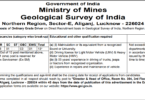The content published on your website is one of the key determinants of your visibility in search results.
Site structure, clean code, page loading speed, graphics optimization, links and many other elements are essential for ranking. But the articles and posts published on your website are of fundamental importance.

Are you an SEO professional , a copywriter or an entrepreneur who entrusts the positioning of the website to independent agencies? Let’s discover together the 5 rules of SEO copywriting to follow.
Analyze the market and choose the right keywords
What seems obvious to you may not be obvious to others and may not match the intentions of your target audience.
When working with SEO copywriting, you try to position yourself for keywords associated with the reference sector, evaluating the best keywords and queries.
But which phrases or words to choose? Certainly the best solution is to carry out an analysis that includes:
- Competitor analysis for the keywords of greatest interest for the sector in which you operate
- Check monthly searches and CPC of individual keywords
- Choose a main keyword that you have the best chance of ranking on
- Make a list of related keywords and synonyms that you can use within the content
- Choose the keywords or queries to use within the text and those to use in the Title; Meta Description and in paragraph titles.
After carrying out this analysis you will certainly have greater opportunities to build content that is informative but also well optimized to meet the questions, phrases and words that users type on search engines.
Make sure the content is informative and error-free
The days of just writing anything containing an appropriate number of keywords are over. Now, both Google and the public can see if an article makes sense and is informative. So make sure your articles and posts are logical and worth reading.
At the center of every SEO Copywriting strategy is the careful choice of topics to address in an article or web page. Returning to a fundamental point, it is necessary to write with the reader in mind.
However, it is precisely through search engines that we identify the needs of our audience. Google is a vast library, a database that collects questions and needs.
Thanks to the most advanced SEO tools, we can identify this information, understand which are the topics that most interest the user and starting from the analysis of the so-called search intent (i.e. search intent) understand which are the points to develop within a article and information to provide to your audience.
Start from the main topic and develop the topic
How do you develop a topic correctly and how do you go about structuring the article? There are various tools that can be used to analyze what the user is really interested in but also what content is offered by competitors, but first of all it is necessary to identify the main topic.
The mind map you build must always start from the main topic, and then develop the topic into various macro and micro topics, with the help of tools such as Ubersuggest, Semrush, SEOzoom and Answer the public.
The most important topics for the reader (in terms of search volume and relevance) will then be transformed into paragraphs introduced by titles in H2 or H3.
This way, the article will respond to the needs of the audience! At the same time, however, remember to always follow the rules of good writing.
The essence is simple: write texts that are relevant, capable of satisfying a need in the best possible way. Using all the resources available !
Remember that you can also extend your search within forums and social networks to be able to identify audience questions and needs, and thus create content that makes a difference.
Pay attention to the microcontent of the page
A good copywriter must optimize all the elements of a page . It’s not enough to write a lot and well, just as it’s not enough to find a catchy title: micro-copy activities can make the difference. What am I referring to?
First, to the SEO-friendly URL , the address of the resource in question: it must be concise, readable, able to describe the content using the main keywords. But without exaggerating.
Furthermore, there are texts that allow SEO optimization of images. I am referring in particular to the alternative (fundamental) text, the title element, the file name and the caption.
Remember that Google does not interpret visual elements, it contextualizes them thanks to the words you use in these fields. This is why they become essential.
Another micro-content to take care of is the anchor text of the links . Whether internal or external links, they must be meaningful. They must be able to indicate the destination page to those who are about to click.
Overuse of keywords is not the solution
The keywords you rank for must come from the content of your website. Use them naturally and introduce derived forms and synonyms.
Overuse of keywords , also known as “ keyword stuffing ,” is not the solution to a solid SEO strategy. Indeed, this practice can be counterproductive, given that search engines, such as Google, punish sites that try to manipulate their system with deceptive techniques.
Keywords should arise naturally from the content of your website and not be inserted forcefully or unnaturally. It’s important to remember that SEO is primarily about creating useful and relevant content for users.
This content should be written in a way that answers questions and meets the needs of your visitors. The natural use of keywords within this content is a secondary result of this priority.
Additionally, it’s helpful to introduce derivative forms and synonyms of your main keywords. This not only helps make your content more diverse and interesting for readers, but also improves your visibility in search engines.
Google and other search engines use sophisticated algorithms to understand the context in which a keyword is used; therefore, using synonyms and variations can actually broaden your SEO coverage.
Also remember that your use of keywords should extend beyond the body of your content. URLs, image captions, page titles, and meta descriptions are all good places to place keywords. However, as in the body of the text, the use of keywords in these sections should always be natural and relevant.






